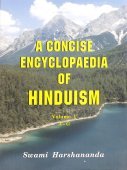Sant: 6 definitions
Introduction:
Sant means something in Hinduism, Sanskrit, Buddhism, Pali, Hindi, biology. If you want to know the exact meaning, history, etymology or English translation of this term then check out the descriptions on this page. Add your comment or reference to a book if you want to contribute to this summary article.
Biology (plants and animals)
Source: Google Books: CRC World Dictionary (Regional names)1) Sant in Arabic is the name of a plant defined with Acacia nilotica in various botanical sources. This page contains potential references in Ayurveda, modern medicine, and other folk traditions or local practices It has the synonym Mimosa scorpioides L. (among others).
2) Sant in India is also identified with Boerhavia diffusa It has the synonym Boerhavia hirsuta Willd., nom. illeg., non Boerhavia hirsuta Jacq. (etc.).
Example references for further research on medicinal uses or toxicity (see latin names for full list):
· Flora Indica, or ‘Descriptions of Indian Plants’ (1768)
· Phytographia (1794)
· Journal of Ethnopharmacology (2005)
· First lessons in Oriya. (1912)
· Contributions from the United States National Herbarium (1905)
· An English and Oriya dictionary. (1873)
If you are looking for specific details regarding Sant, for example extract dosage, health benefits, diet and recipes, pregnancy safety, side effects, chemical composition, have a look at these references.

This sections includes definitions from the five kingdoms of living things: Animals, Plants, Fungi, Protists and Monera. It will include both the official binomial nomenclature (scientific names usually in Latin) as well as regional spellings and variants.
Languages of India and abroad
Pali-English dictionary
Source: Sutta: The Pali Text Society's Pali-English DictionarySant, (ppr. of atthi) 1. being, existing D. I, 61, 152; A. I, 176; It. 62 sq.; Sn. 98, 124.—2. good, true S. I, 17; Dh. 151. ‹-› Cases: Nom. sg. m. santo Sn. 98; Miln. 32; Nd2 635 (=samāna); f. satī (q. v.); nt. santaṃ A. V, 8; PvA. 192; Acc. santaṃ D. II, 65; & sataṃ J. IV, 435 (opp. asaṃ); Instr. satā D. II, 55; Loc. sati D. II, 32; A. I, 176; III, 338; Sn. 81; Dh. 146; It. 85; & sante D. I, 61; Abl. santato Nett 88; DhsA. 206 sq.—pl. Nom. santo M. I, 24; S. I, 71; Sn. 450; It. 62; Dh. 151; nt. santāni D. I, 152; Acc. sante Sn. 94, 665; Gen. sataṃ M. I, 24; S. I, 17; Sn. 227; Instr. sabbhi D. II, 246; S. I, 17, 56; Miln. 221=J. V, 49; Dh. 151; Loc. santesu.—Compar. santatara It. 62; superl. sattama (q. v.). (Page 675)

Pali is the language of the Tipiṭaka, which is the sacred canon of Theravāda Buddhism and contains much of the Buddha’s speech. Closeley related to Sanskrit, both languages are used interchangeably between religions.
Sanskrit dictionary
Source: Cologne Digital Sanskrit Dictionaries: Benfey Sanskrit-English DictionarySant (सन्त्).—see 1. as.
Source: Cologne Digital Sanskrit Dictionaries: Cappeller Sanskrit-English DictionarySant (सन्त्).—[feminine] satī existing, being (often otiose), present, happening; belonging to ([genetive]); living, lasting; real, genuine, true, honest, good. [masculine] [plural] the living or the good, wise, noble etc. [feminine] satī a virtuous wife, female i.[grammar], also = bhavatī your honour, you; [Name] of Viśvāmitra’s wife etc.
— [neuter] sat the being or existent, existence, the real world, anything good or useful. As [adverb] well, fitly; satkṛ v. [substantive] v.
[Sanskrit to German]
Sanskrit, also spelled संस्कृतम् (saṃskṛtam), is an ancient language of India commonly seen as the grandmother of the Indo-European language family (even English!). Closely allied with Prakrit and Pali, Sanskrit is more exhaustive in both grammar and terms and has the most extensive collection of literature in the world, greatly surpassing its sister-languages Greek and Latin.
Hindi dictionary
Source: DDSA: A practical Hindi-English dictionarySant in Hindi refers in English to:—(a and nm) saintly; a saint; ~[pana (pana)] saintly stance; hypocritic behav:our; -[samagama] association with saints; a congregation of saintly people..—sant (संत) is alternatively transliterated as Saṃta.
...
See also (Relevant definitions)
Starts with (+1019): Camta, Camti, Canta-kavirayar, Canta-linkacuvamikal, Cantacantirotayam, Cantacu, Cantaiccarakku, Cantaicol, Cantaikkaran, Cantaikkuttam, Cantaikuttu, Cantaimutal, Cantaivai, Cantaiyerru, Cantaiyiraiccal, Cantakai, Cantakaippalakai, Cantakappai, Cantakaputpam, Cantakkavi.
Ends with (+24): Aditsant, Ahimsant, Anaparamrishant, Animishant, Anucchusant, Anupasprishant, Aprakashant, Apratishamsant, Arakshant, Asamsprishant, Asamvasant, Asant, Ashasant, Asprishant, Avicikitsant, Avishvasant, Barf-basant, Basant, Bassant, Dhrishant.
Full-text (+140): Sajjana, Pratisatkar, Sattara, Satkar, Abhisatkar, Santatara, Sant tree, Sadasadatmaka, Sadbhagya, Santa-mahanta, Sadvriksha, Sadashis, Satkadamba, Sadviccheda, Sadvacas, Salloka, Samantra, Sammana, Satkanda, Sadvaidya.
Relevant text
Search found 16 books and stories containing Sant; (plurals include: Sants). You can also click to the full overview containing English textual excerpts. Below are direct links for the most relevant articles:
Recollection < [January – March, 1990]
Across Deluge < [October 1987 – March 1988]
Neutral < [October – December, 1988]
Lord Jhulelal: An Analytical Study (by Thakkar Harish Gopalji)
Part 2 - Cheti Chand and other celebrations based on faith and devotion < [Chapter 5 - Observations, Discussion and Conclusion]
Part 5.2 - Lord Jhulelal’s Rituals: Sindhi community < [Chapter 4 - Analysis]
Jnaneshwari (Bhavartha Dipika) (by Ramchandra Keshav Bhagwat)
Village Folk-tales of Ceylon (Sri Lanka), vol. 1-3 (by Henry Parker)
Story 26 - The Kitul Seeds < [Part I - Stories told by the Cultivating Caste and Vaeddas]
Folk Tradition of Bengal (and Rabindranath Tagore) (by Joydeep Mukherjee)
Settlement in Early Historic Ganga Plain (by Chirantani Das)
Part 3 - Rivers and other water sources of Vārāṇasī < [Chapter V - Rise of Vārāṇasī as a Nodal Centre]
Part 6 - Agriculture of the Vārāṇasī region < [Chapter V - Rise of Vārāṇasī as a Nodal Centre]
Part 1 - Cultural back ground of Vārāṇasī as an emerging nodal centre < [Chapter V - Rise of Vārāṇasī as a Nodal Centre]
Related products
